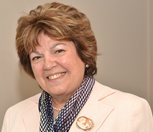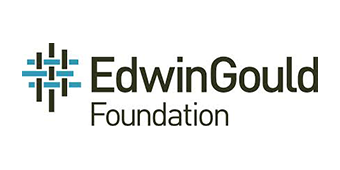Funder’s Forum: The Teagle Foundation A conversation with Judith Shapiro
The Teagle Foundation, headquartered in New York, intends to be a catalyst for change in higher education in the arts and sciences through grants to institutions of higher education, a long-established scholarship program for the children of ExxonMobil employees, and efforts to help economically disadvantaged young people in New York City gain admission to college and succeed once there. Foundation Center asked Judith Shapiro, its president:
Question What are the Teagle Foundation's areas of interests, and how can colleagues partner with you to amplify the good work that you're doing?
“The Teagle Foundation focuses on liberal arts and on assessing the effectiveness of teachers and how well students are learning. Early on in our history, we gave grants to small, struggling liberal arts colleges, which was a very kind thing to do, but it wasn't very strategic. I date Teagle's real effectiveness — and relatively high profile in the world of higher education foundations — to the presidency of Robert Conner, a professor of classics at Princeton and head of the National Humanities Center. He partnered with other like-minded organizations that helped us move our agenda along. I characterize his approach as assessment of the faculty, by the faculty, and for the faculty. It's not assessment in the service of some kind of external accountability — not that there's anything wrong with this approach. But it's often very rigid, and it measures things that don't necessarily get at the quality of the educational experience.
“Bob was interested in assessing the faculty and students' learning to help improve teaching. So it should be the faculty, first and foremost, who are engaged in it. It should be the faculty who look at the results, and the faculty who thereby do better by those students. It turns out, though, that since assessment has become so mainstream it has become no longer necessary for the foundation to focus on it explicitly and exclusively. With the presidency of Richard Morrow, Bob Conner's successor, the foundation has moved into supporting pedagogical initiatives and innovations and curriculum planning. The assessment part is still there, in that every potential grantee should know how they're going to assess the success of their project. We also take seriously the obligation to assess our own grantmaking, getting outside consultants to evaluate our initiatives. We also expect our grantees to have a plan for disseminating the results of their projects as broadly as possible. We tend to fund four to six institutions working together because we believe collaboration serves the interests both of promoting programs of quality and helping to control their costs. It also enables our grants to have an impact beyond their size.
“I wanted to mention that a third of our funding currently is allocated to something called College Community Connections — a program where city-based, community-based organizations partner with universities to prepare students to flourish in a liberal arts higher educational setting. So, it's not merely SAT prep, or how to write an application essay. It involves having students experience courses at a college. That's the part of our work that focuses on access and success.
“We also look to collaborate with grantmaking organizations with similar funding interests. For example, we are working with the Mellon Foundation, one of our neighbors, in a very complementary, effective way, in the field of hybrid learning. Mellon may go in with a set of grants that prepare faculty members at a range of institutions and help administrators plan on issues of hybrid learning, and this serves as a faculty development program. And then we can go in with more specific hybrid learning proposals for particular areas of the curriculum. More generally, we are exploring the advantages of incorporating hybrid learning into higher education and how it can benefit institutions and students alike. We're investigating how hybrid learning can increase access while maintaining and possibly even enhancing quality and decreasing cost. The question with hybrid learning is: What combination can preserve the advantages of actual human community — and as an anthropologist, I'm big on actual human communities — while also bringing in the advantages of new technologies?
“We also have a current focus on curricular coherence, namely how to counteract the centrifugal forces that have made it difficult for students to see how the various aspects of their college education connect and to chart meaningful pathways through their undergraduate years. To achieve this, the foundation supports faculty efforts to work together as a community of teachers in the same way they are used to working together as a community of scholars.”





